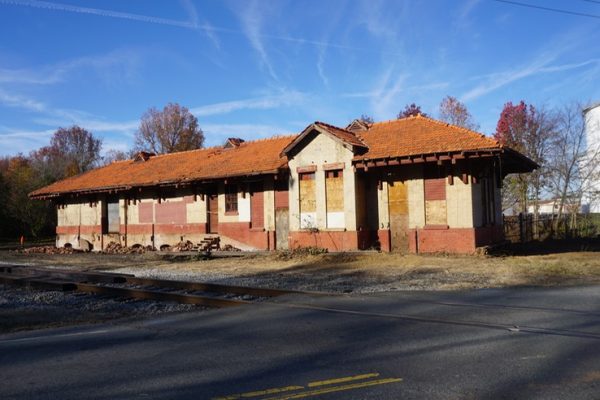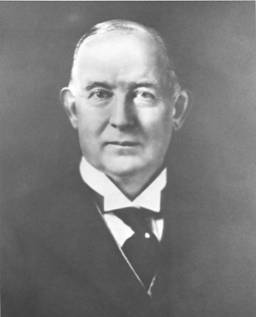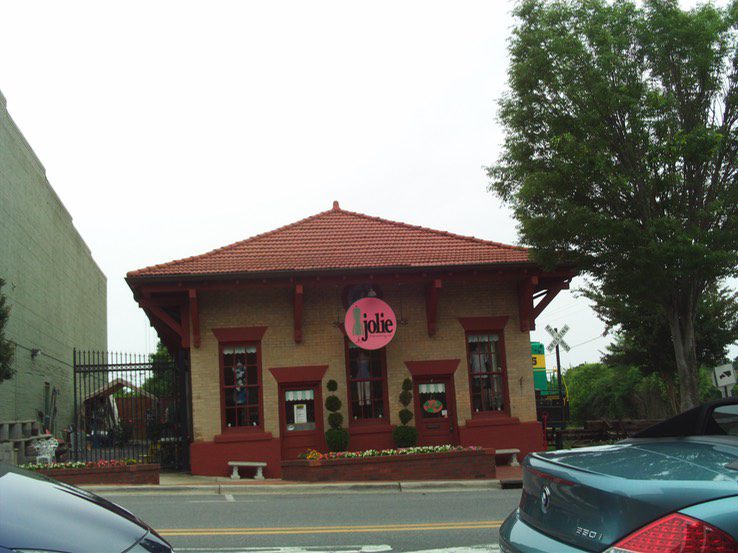In preservation win, landmark west Charlotte depot to be moved

In what local preservationists call a major victory, a century-old depot—the deteriorating relic of a lost era of Charlotte-Gastonia passenger rail—will be moved a short distance and repaired.
The old Piedmont and Northern Railway depot has stood since 1912 in northwest Charlotte, on Old Mount Holly Road beside what are now CSX-owned tracks used for freight service. It is Mecklenburg County’s last surviving depot along the old P&N line, an electrified interurban railway launched by James B. Duke’s Southern Power and Utilities Co., forerunner of today’s Duke Energy. The depot was designated a landmark in 2010 and is on the National Register of Historic Places.
Its owner, CSX railroad, had no use for the building, and preservationists feared it eventually would be demolished. Those fears were nearly realized.
In 2010 the City of Charlotte inspected the depot and ordered the owner to repair it or demolish it. CSX applied for a demolition permit. Because it was a landmark, the Charlotte-Mecklenburg Historic Landmarks Commission was able to force a year’s delay to see if a way could be found to save the building. As discussions continued among CSX, the N.C. Department of Transportation and the landmarks commission, CSX withdrew its demolition application.
It took a while, but in June CSX donated the depot to the NCDOT Rail Division, which owns the P&N’s 13-mile Gaston County section as well as a short section of right-of-way starting in uptown Charlotte. The NCDOT bought land across the CSX tracks and plans to move the depot in late January, stabilize the building and find a tenant.
“It’s an incredible victory,” says Dan Morrill, consulting director of the Charlotte-Mecklenburg Historic Landmarks Commission. “We have really worked with CSX, and we hoped they’d sell it to us.” However, the landmarks commission did not have the money to move the depot, he said. “But NCDOT came through.”
[highlight] Video from Charlotte-Mecklenburg Historic Landmarks Commission about the depot’s move [/highlight]
“Our goal is to rehab the building and secure a tenant, but there is no specific timeline,” NCDOT facilities engineer Craig Newton said in an email interview. He said the department spent $381,000 to buy the property to which the depot will be moved; the relocation and stabilization cost will be $683,300. Newton said 80 percent of the project cost comes from federal funding set aside for projects along the P&N route. The remaining 20 percent are state matching funds.
Known originally as the Paw Creek depot and later the Thrift depot, for the nearby textile mill village of Thrift, the station was designed by noted Charlotte architect C.C. Hook, who also designed the James B. Duke Mansion in Myers Park and Old City Hall. Hook used the same red-tiled, Spanish Colonial-style roof and distinctive brown wood and yellow and red brick for all the P&N stations.

[highlight]Read more about the Thrift Depot [/highlight]
In those days, the P&N line ran from uptown Charlotte past a now-lost amusement park, Lakewood, built by the Southern Power Co. on a lake created by damming a tributary of Stewart Creek between what are now the Lakewood and Enderly Park neighborhoods. A tornado and heavy rains washed out the dam in 1936 and the amusement park closed. But passenger service on the P&N continued until 1951. After that, many of its depots began to fall to demolition, especially in Charlotte. Today, P&N stations in the Gaston County towns of Mount Holly and Belmont survive and house local businesses. The Gastonia depot was demolished in the 1990s.
In Gaston County, where the NCDOT owns the P&N line, the state leased the route to Patriot Rail for freight service, but the company terminated its lease. Iowa Pacific leased the tracks in August, and its subsidiary, Premier Rail Collection, which operates shortline passenger rail excursions around the country, has begun a 70-minute Christmas-themed excursion from the Belmont station. (Update Dec. 3, 2015: An earlier version of this article incorrectly reported that Premier Rail Collection had leased the tracks.)